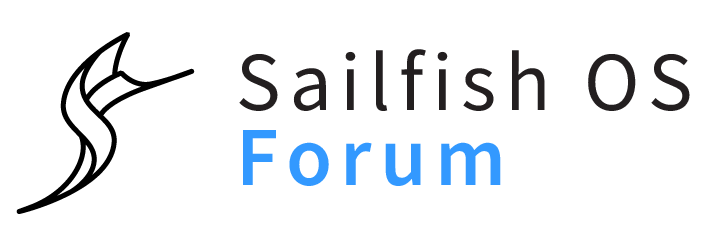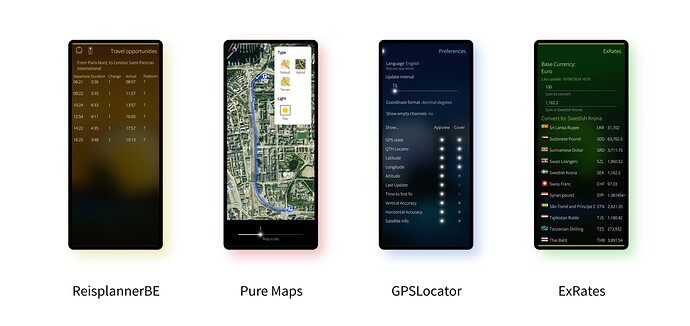Sailfish OS update from Jolla
When this fortnight goes out, the first Sauna 4.6 release candidate has been in the hands of community beta testers for three weeks. Community beta testers have been exceptionally active. They have reported dozens of problems with the first release candidate. The feedback have been constructive and helpful. Let’s iron out issues from the Sauna release together. As a heads up, the next release candidate is planned for next week.
Same time you, the Sailfish Community, have been eagerly waiting for news regarding Sony Xperia 10 IV and Xperia 10 V support. Earlier this week some of you realized from the docs repository that something is happening. The news is that yes, we will support Sony Xperia 10 IV and Xperia 10 V. Some speculation even started regarding AppSupport. The thing regarding AppSupport is that it will eventually be available for Xperia 10 IV & V but the first version will be without commercial components. The reason for this is that we do have major issues left to tackle like fingerprint is not working, camera is hanging, battery charge level is not reported, just to name a few. We should be getting new binary blobs from Sony soonish and we’re hoping that some of the issues will be fixed there. Same time we’re looking at the issues as well.
We’re not yet ready to publish Xperia 10 IV & V images. However, build instructions you may soon find from docs. Building an image yourself is an option for the ones who’d like to take a sneak peek or even contribute fixes. David (@flypig) wrote his experiences on building Xperia 10 III image. That post should give you insights on how to proceed. The Xperia 10 IV & V images will be first made available for the community beta testers and from there eventually for all users.
Stay tuned!
Energy from the Community
Repository roundup
Most of the changes reported in the last two weeks are changes done in the main branches of each repository. The functionalities for the upcoming version 4.6 have been frozen already and only fixes are done for that version in branches named upgrade-4.6.0.
Communication bits
-
mkcal, storage backend using SQLite for calendar entries, dcaliste fixed an issue introduced in functiondeleteAllIncidences()making WebCAL synchronisers duplicate events on sync. He later removed this function completely to decrease the API differences with the upstreamKCalendarCore::Calendarclass. Indeed, this function became after the fix of a simple wrapper on a two-line loop. -
buteo-sync-plugin-webcal, a sync plugin to sync web calendar resources, dcaliste replaced a call to the removeddeleteAllIncidences()function frommKCal. -
openconnect, open client for Cisco AnyConnect VPN, pvuorela excluded two Python files from packaging to avoid a dependency onPython3that is not needed. -
nemo-qml-plugin-email, QML bindings for emails, dcaliste reworked the attachment model so it is linked to an EmailMessage object. It should allow to deal with attachments in encrypted emails. -
libconnman-qt, QML bindings for the connection manager, pvuorela performed various clean-up on the code. He also proposed to deprecate thestatusproperty inNetworkManagerclass (which was a string) and replace it with a new property calledglobalStatusbased on an enumeration.
Navigating the web
-
embedlite-components, QML components for the browser, ilpianista proposed to expose if a download result is coming from a tab in private mode. -
sailfish-browser, the browser application itself, pvuorela changed the build system to create a shared library for the browser and the captive portal application. It saves on build time, disk space and memory consumption. ilpianista proposed not to store in the transfer list, files that have been downloaded from a private tab.
Middleware
-
mce, mode control entity, mal exposed thebattery_charging_enabledentry from the kernel, to allow to pull power for the device from a USB link without charging the battery. -
sensorfw, sensor framework, mal added support for Android sensor device API 1.0.
Low-level libraries
-
openssl, utilities and library for cryptography, Thaodan worked on updating legacy OpenSSL 1.1 version to its latest patch. -
libarchive, a library to handle compressed formats, mal updated it to 3.7.3. -
util-linux, a collection of basic system utilities, mal disabled CD-ROM probing since it creates a kernel crash on some Unisoc devices due to ioctl number collision with ufs_sprd driver ioctls.
Developer’s corner
-
python3-requests, Python module to execute HTTP requests, nephros updated it to 2.31.0. -
rpm, a software package format and tools, Thaodan picked a patch from Open Suse that doesn’t check for unpackaged info pages. So there is no need anymore to remove info pages in the installation steps in RPM spec files. - martyone committed changes for possible issues found by Coverity:
- in
libglibutil, - in
binder-utils, - in
mlite, - in
nemo-qml-plugin-dbus
App roundup
For reasons best known to the developers themselves, there’s been a bit influx of travel apps to the Jolla Store in the last fortnight. It might be the time of year. As it happens there’s been a big influx of all kinds of apps, but the theme around travel is definitely there. We sadly don’t have the time or space to cover them all in the newsletter, but I hope you’ll agree we’ve picked a nice selection for you to consider.
So let’s get straight into our travel-themed app roundup for this newsletter!
First up is ReisplannerBE from rgrnetalk. This is an alternative version of the Reisplanner, providing information about Belgian railway instead of Dutch railway services. The apps are slightly different: unlike the Dutch version, the BE version doesn’t allow you to specify stations to travel via. On the other hand, the BE version does have English language translations (in addition to Dutch, French and German). And of course, they cover different services, although both do offer long-distance European travel information beyond their respective countries.
Using the app turns out to be straightforward: enter your departure and destination stations from a searchable list, select your departure or arrival date and time, and off you go. A neat icon next to the entries allows you to reverse the entries for your return journey, as well as to check live details about the station (although this only works for certain stations).
The list of departures (or “travel opportunities” as the app rather poetically phrases it) gives all the pertinent info, although you can also get more detail by selecting one of the entries. You can also get earlier or later entries — either from the list or a single entry — from the pull-down menu.
The settings page is particularly nice, allowing you to set your preferred stations as well as a collection of associated options. This is great if you regularly make the same journey: it means the app will open with all of the details set. Perfect when you’re on the move and running late! Select a particular journey and it will even be displayed on the cover screen, so you don’t even need to open the app full screen.
One final neat feature is that the app will also provide details of any advertised disruptions. The latest version brings updated translations and works very nicely and the version number to 0.31. ReisplannerBE is available on the Jolla Store.
Next up is — I have to admit — one of my all-time favourite apps. Pure Maps from rinigus has been directing my movements around the world for many years now and has rarely let me down. It’s a real powerhouse of an app with far too many features to go through here, but in short, if you want a professional, slick and open-source mapping app with features to rival some of the best commercial alternatives then you’re going to like Pure Maps.
Of course, there’s an excellent map viewing capability built off of a variety of interchangeable external services — including MapTiler, MapBox, OpenStreetMap and Here — and solid routing with support for eight different modes of transport. But that’s really just the start. The search options work well, you can set favourites, switch between day and night mode, search for nearby sites using a range of categories, plus configure the app in a million different ways. The app is available from the Jolla Store in a slightly restricted form, so while it will give you all this if you go with the version from OpenRepos or Chum you can also configure voice navigation.
Sailfish OS is blessed with a whole collection of different mapping apps: Pure Maps, OSM Scout, Mæp and modRana, amongst others. They all have overlapping but distinct features and all are worth looking at. If you want to give Pure Maps a go, version 3.3.0 is available from the Jolla Store, OpenRepos and Chum.
If you’re interested to know in exactly where you are, but are less interested in knowing where you’re going, then a simpler approach like that offered by GPSLocator, by Dominic Radermacher (blip), might be for you. It won’t show you a map of where you are, nor will it give you voice directions. But it will give you your latitude, longitude, altitude and everything you could hope to know about the status of your GPS sensors. While it won’t give you a map of the Earth, it will give you a map of the sky and the locations of the GPS satellites within visible range.
In practice, these are the two pages available: a summary page containing the data about your location; and a satellite info map.
Despite this rather minimal approach, it nonetheless supports some nice configuration options. You can configure exactly what information to show on the summary page or on the cover display for example.
Sailfish OS has had a changing relationship with GPS (and particularly AGPS) over the years, not least due to changes to Mozilla’s Location Services. As a result, I’ve always found it helpful to have an app like GPSLocator nearby: it gives real-time information about your GPS status in a way that the pulsating home screen icon simply can’t capture. Version 0.21 is the first to support the QTH Location geocoding system (“Maidenhead Locator”), favoured by HAM radio enthusiasts to succinctly share verbal descriptions of a location as a short sequence of alternating letter-number pairs.
One thing to note is that GPSLocator is only available from the Jolla Store for 64-bit ARM devices, but a 32-bit version is also available from OpenRepos.
Our final app today takes things in a slightly different direction. The apps so far are ideal if you’re travelling. But once you arrive you may find the need to use the ExRates app from Sikarjan. It will seamlessly convert between hundreds of different currencies, ensuring you stick to your budget and don’t get taken for a (metaphorical) ride. The app pulls data from either floatrates.com or exchangerate-api.com. You can select which to use, although I found only float rates was working when I tried.
Some of the thoughtful features of the app include the vivid flags shown next to the currencies in the selectable list, the fact you can reorder the entries in the currency list to push the ones you really need to the top, and the fluidity of the scrollable list of currencies. The latest version 1.7 adds Swedish translations alongside the existing Czech, German, French, Simplified Chinese and English. This great little app is available from the Jolla Store and OpenRepos.
If you’re going on a journey, you won’t find a better companion than Sailfish OS fully loaded with these great travel apps. Thanks to all the developers for their amazing work and updates keeping the apps working and full-featured.
We hope you enjoyed the roundup, we’ll have more in the next newsletter.
Please feed us your news
As always, please do not hesitate to share your ideas, thoughts, or suggestion for future newsletter topics.
Hope you enjoyed reading! Thank you all!
Please do also join us at our community meetings on IRC, Matrix and Telegram. Next community meeting will be on the 25th April.


